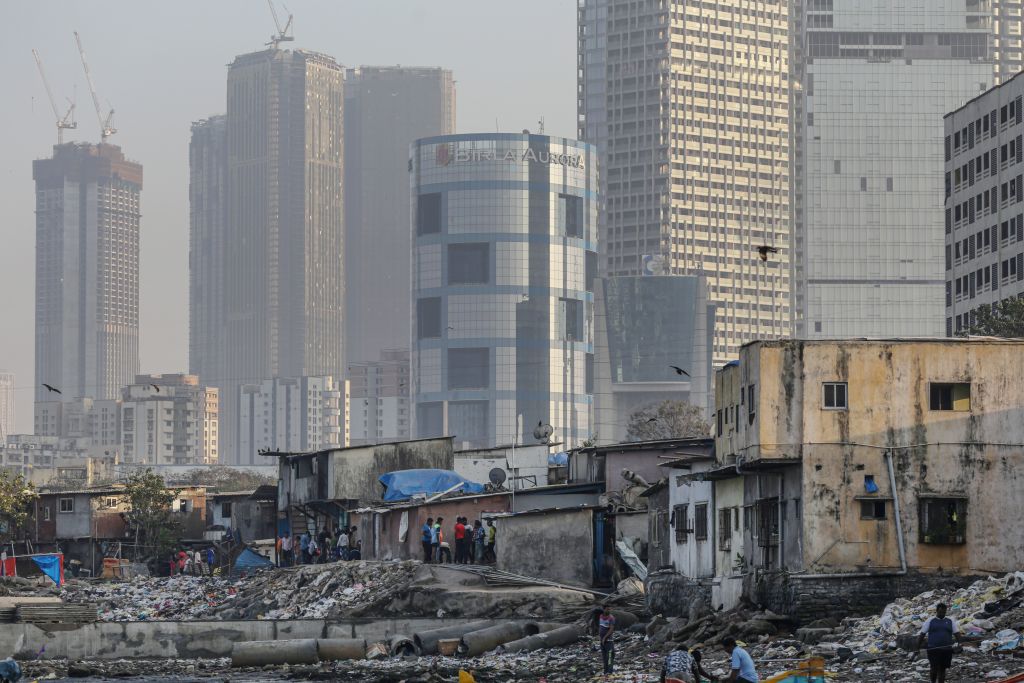India’s Income Inequality Now Worse Than Under British Rule
India's Income Inequality Now Worse Than Under British Rule TIME


Sustainable Development Goals and Income Inequality in India

A new study from the World Inequality Lab reveals the alarming income inequality in India, which is now among the highest in the world. The gap between the rich and poor in India has reached a level where the distribution of income was more equitable during British colonial rule. The study, co-authored by renowned French economist Thomas Piketty, emphasizes the need to address this issue in line with the Sustainable Development Goals (SDGs).
The Rise of Indian Billionaires
India currently has a total of 271 billionaires, with 94 new billionaires added in 2023 alone, according to Hurun Research Institute’s 2024 global rich list. This surge in billionaires has resulted in their collective wealth amounting to nearly $1 trillion, which is approximately 7% of the world’s total wealth. Indian tycoons like Mukesh Ambani, Gautam Adani, and Sajjan Jindal now belong to the same league as Jeff Bezos and Elon Musk, some of the world’s wealthiest individuals.
Inequality Comparison: British Raj vs. Billionaire Raj
The study highlights that the current inequality in India is even more pronounced than during the British colonial era. The authors state, “The Billionaire Raj headed by India’s modern bourgeoisie is now more unequal than the British Raj headed by the colonialist forces.”
Income and Wealth Inequality
The study analyzes the distribution of income and wealth among the top 1% in India. It reveals that the top 1% currently holds 22.6% of the country’s income, whereas during the highest recorded period of inequality in India under British rule, the top 1% held around 20 to 21% of the national income. In terms of wealth, the top 1% in India has access to a staggering 40.1% of the national wealth.
Impact of Political and Economic Reforms
The report highlights that the rise in inequality has been particularly significant since the ruling Bharatiya Janata Party came to power in 2014. The authors attribute this to political and economic reforms that have led to an authoritarian government with centralized decision-making power and a growing nexus between big business and the government. This concentration of power and influence is likely to further exacerbate inequality.
Addressing Inequality and Achieving SDGs
The authors suggest that public investments in health, education, and nutrition can benefit not only the Indian elite but also the average citizens. They propose a “super tax” of 2% on the net wealth of the 167 wealthiest Indian families, which would generate significant revenue for such investments. By implementing these measures, India can create valuable fiscal space and work towards achieving the SDGs.
Monitoring and Challenging Inequality
The authors emphasize the importance of closely tracking and challenging income and wealth inequality in India. They caution against the possibility of India sliding towards plutocracy and stress the need to uphold the integrity of key institutions. The study also highlights the decline in the standard of economic data in India, making it crucial to monitor inequality and take necessary actions.
SDGs, Targets, and Indicators
-
SDG 1: No Poverty
- Target 1.4: By 2030, ensure that all men and women, in particular, the poor and the vulnerable, have equal rights to economic resources, as well as access to basic services, ownership, and control over land and other forms of property, inheritance, natural resources, appropriate new technology, and financial services, including microfinance.
- Indicator 1.4.2: Proportion of total adult population with secure tenure rights to land, with legally recognized documentation and who perceive their rights to land as secure, by sex and by type of tenure.
-
SDG 10: Reduced Inequalities
- Target 10.1: By 2030, progressively achieve and sustain income growth of the bottom 40 percent of the population at a rate higher than the national average.
- Indicator 10.1.1: Growth rates of household expenditure or income per capita among the bottom 40 percent of the population and the total population.
- Indicator 10.1.2: Proportion of population living below the national poverty line, by sex and age.
- Indicator 10.1.3: Share of income of the poorest 40 percent of the population, by sex and age.
Table: SDGs, Targets, and Indicators
| SDGs | Targets | Indicators |
|---|---|---|
| SDG 1: No Poverty | Target 1.4: By 2030, ensure that all men and women, in particular, the poor and the vulnerable, have equal rights to economic resources, as well as access to basic services, ownership, and control over land and other forms of property, inheritance, natural resources, appropriate new technology, and financial services, including microfinance. | Indicator 1.4.2: Proportion of total adult population with secure tenure rights to land, with legally recognized documentation and who perceive their rights to land as secure, by sex and by type of tenure. |
| SDG 10: Reduced Inequalities | Target 10.1: By 2030, progressively achieve and sustain income growth of the bottom 40 percent of the population at a rate higher than the national average. | Indicator 10.1.1: Growth rates of household expenditure or income per capita among the bottom 40 percent of the population and the total population. |
| Indicator 10.1.2: Proportion of population living below the national poverty line, by sex and age. | ||
| Indicator 10.1.3: Share of income of the poorest 40 percent of the population, by sex and age. |
Analysis
The issues highlighted in the article are connected to SDG 1: No Poverty and SDG 10: Reduced Inequalities.
SDG 1: No Poverty
The article discusses the soaring income inequality in India, indicating a significant gap between the rich and the poor. This relates to SDG 1, which aims to eradicate poverty in all its forms and dimensions. The target identified is Target 1.4, which focuses on ensuring equal rights to economic resources and access to basic services for the poor and vulnerable. The indicator mentioned is Indicator 1.4.2, which measures the proportion of the population with secure tenure rights to land.
SDG 10: Reduced Inequalities
The article highlights the stark income inequality in India and the rise of billionaires, indicating a need to address inequalities. This aligns with SDG 10, which aims to reduce inequalities within and among countries. The target identified is Target 10.1, which focuses on achieving income growth for the bottom 40 percent of the population at a rate higher than the national average. The indicators mentioned are Indicator 10.1.1, which measures growth rates of household expenditure or income per capita among the bottom 40 percent of the population, Indicator 10.1.2, which measures the proportion of the population living below the national poverty line, and Indicator 10.1.3, which measures the share of income of the poorest 40 percent of the population.
The article provides specific information on income and wealth distribution in India, highlighting the concentration of wealth among the top 1% of the population. This information can be used to measure progress towards the identified targets and indicators. By tracking the income and wealth distribution over time, it is possible to assess whether income growth is being achieved for the bottom 40 percent of the population, if the proportion of the population living below the national poverty line is decreasing, and if the share of income for the poorest 40 percent of the population is increasing.
Behold! This splendid article springs forth from the wellspring of knowledge, shaped by a wondrous proprietary AI technology that delved into a vast ocean of data, illuminating the path towards the Sustainable Development Goals. Remember that all rights are reserved by SDG Investors LLC, empowering us to champion progress together.
Source: time.com

Join us, as fellow seekers of change, on a transformative journey at https://sdgtalks.ai/welcome, where you can become a member and actively contribute to shaping a brighter future.







